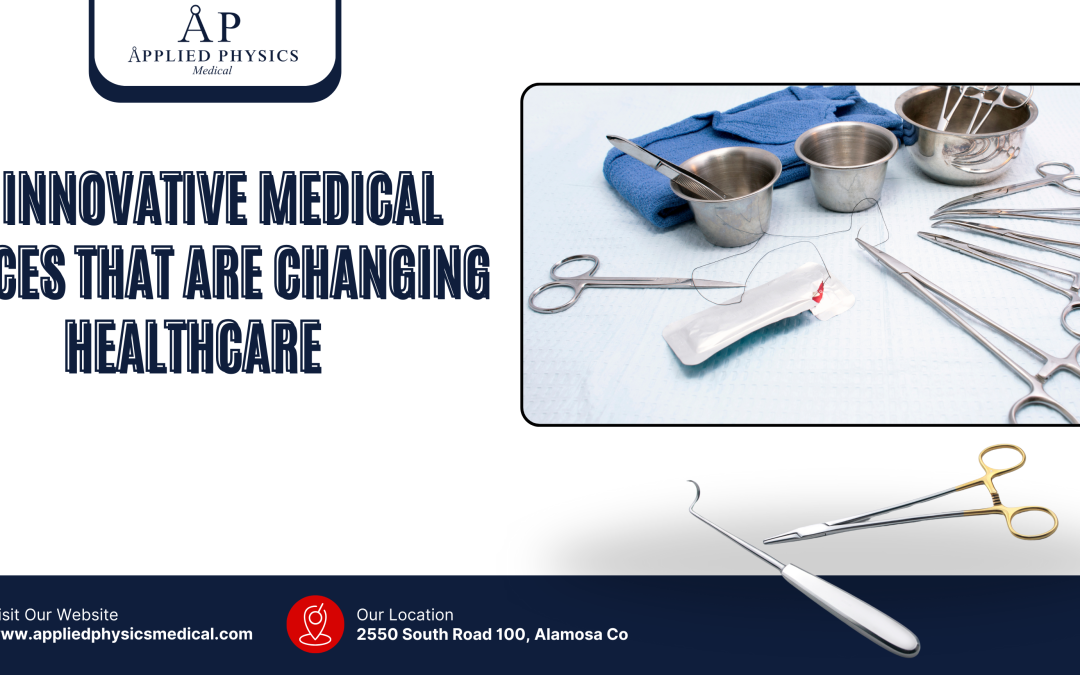Introduction
Remote Patient Monitoring Technology has revolutionized the field of healthcare by providing healthcare providers with real-time data on patient health. This technology allows for continuous health tracking, enabling timely interventions and improving patient outcomes. With remote patient monitoring technology, healthcare professionals can monitor patients outside traditional clinical settings, reducing the need for frequent in-person visits. For example, devices that track vital signs can alert providers to potential health issues before they become critical, ensuring that patients receive the care they need promptly.
With its high-definition 3D vision and wristed instruments that bend and rotate with greater dexterity than the human hand, the da Vinci system has significantly improved surgical outcomes and patient satisfaction. In addition to the da Vinci system, other robotic surgery systems such as the Mako Robotic-Arm Assisted Surgery system have been developed to assist in orthopedic procedures, such as knee and hip replacements. These systems use preoperative CT scans to create a 3D model of the patient’s anatomy, allowing for precise planning and execution of the surgery.
As technology continues to advance, robotic surgery systems are expected to become even more sophisticated, further enhancing the capabilities of surgeons and improving patient care.
Key Takeaways
- Robotic surgery systems are revolutionizing the way surgeries are performed, allowing for greater precision and less invasive procedures.
- Wearable health monitoring devices are empowering individuals to take control of their health by providing real-time data and insights.
- 3D-printed prosthetics and implants are custom-made for each patient, leading to better fit and functionality.
- Remote patient monitoring technology is enabling healthcare providers to keep track of patient’s health outside of traditional clinical settings.
- Smart inhalers for asthma and COPD are improving medication adherence and management of respiratory conditions.
Wearable Health Monitoring Devices
Wearable health monitoring devices have become increasingly popular in recent years, allowing individuals to track their health and fitness in real time. These devices, such as fitness trackers and smartwatches, can monitor a wide range of health metrics, including heart rate, sleep patterns, physical activity, and even stress levels. By providing users with continuous feedback on their health and wellness, wearable health monitoring devices have the potential to promote healthier lifestyles and prevent chronic diseases.
One of the key advantages of wearable health monitoring devices is their ability to provide personalized data that can be used to inform healthcare decisions. For example, individuals with chronic conditions such as diabetes or hypertension can use these devices to track their blood sugar levels or blood pressure throughout the day, allowing for more proactive management of their health. Additionally, wearable health monitoring devices can also be integrated with telemedicine platforms, allowing healthcare providers to remotely monitor their patients’ health and intervene when necessary.
As technology continues to advance, wearable health monitoring devices are expected to become even more sophisticated, offering even greater insights into an individual’s health and well-being.
3D Printed Prosthetics and Implants
The development of 3D printing technology has had a profound impact on the field of medicine, particularly in the creation of prosthetics and implants. 3D-printed prosthetics and implants are revolutionizing the way that healthcare providers are able to treat patients with limb loss or musculoskeletal injuries. Unlike traditional prosthetics and implants, which are often mass-produced and may not fit a patient’s unique anatomy perfectly, 3D-printed prosthetics and implants can be customized to each patient’s specific needs.
One of the key advantages of 3D-printed prosthetics and implants is their ability to improve patient outcomes and quality of life. By creating custom-fitted devices that closely match a patient’s natural anatomy, 3D-printed prosthetics and implants can provide greater comfort, functionality, and aesthetics for the patient. Additionally, 3D printing technology allows for rapid prototyping and production of these devices, reducing lead times and costs associated with traditional manufacturing methods.
As a result, patients can receive their custom-fitted prosthetics and implants in a timelier manner, allowing them to regain mobility and independence sooner.
Remote Patient Monitoring Technology
| Medical Device | Function | Impact |
|---|---|---|
| Artificial Pancreas | Automatically monitors and regulates blood sugar levels | Improves quality of life for diabetes patients |
| 3D-Printed Organs | Creates customized organs for transplantation | Addresses organ shortage and reduces rejection rates |
| Smart Inhalers | Tracks medication use and provides feedback | Improves asthma and COPD management |
| Robotic Surgery Systems | Enables minimally invasive and precise surgeries | Reduces recovery time and complications |
| Wireless Brain Sensors | Monitors brain activity and detects abnormalities | Enhances diagnosis and treatment of neurological disorders |
| Nanorobots | Delivers targeted drug therapy and performs microsurgery | Potential for precise and non-invasive treatments |
| Virtual Reality Therapy | Provides immersive therapy for pain management and rehabilitation | Enhances patient experience and outcomes |
| Smart Contact Lenses | Monitors glucose levels and provides vision correction | Improves diabetes management and vision care |
| Portable Ultrasound Devices | Enables point-of-care imaging and diagnosis | Expand access to medical imaging in remote areas |
| Bionic Exoskeletons | Assists mobility for individuals with paralysis or weakness | Enhances independence and quality of life |
Remote patient monitoring technology has emerged as a valuable tool for healthcare providers to monitor patient’s health outside of traditional clinical settings. This technology allows for the continuous collection of patient data, such as vital signs, medication adherence, and symptoms, which can be transmitted to healthcare providers in real time. By enabling remote monitoring of patients with chronic conditions or those recovering from acute illnesses, remote patient monitoring technology has the potential to improve patient outcomes, reduce hospital readmissions, and lower healthcare costs.
One of the key benefits of remote patient monitoring technology is its ability to provide early detection of health issues and prompt intervention by healthcare providers. For example, patients with heart failure can use remote monitoring devices to track their weight, blood pressure, and oxygen levels at home, allowing for early identification of potential complications. Additionally, remote patient monitoring technology can also facilitate virtual consultations between patients and healthcare providers, reducing the need for in-person visits and improving access to care for patients in rural or underserved areas.
As technology continues to advance, remote patient monitoring technology is expected to become even more sophisticated, offering greater insights into patients’ health and enabling more proactive and personalized care.
Smart Inhalers for Asthma and COPD
Smart inhalers are a recent innovation in respiratory care that has the potential to improve the management of asthma and chronic obstructive pulmonary disease (COPD). These inhalers are equipped with sensors that track medication usage and inhalation techniques, providing patients with real-time feedback on their inhaler use. By promoting proper inhaler technique and adherence to medication regimens, smart inhalers have the potential to reduce exacerbations and hospitalizations for patients with asthma and COPD.
One of the key advantages of smart inhalers is their ability to empower patients to take control of their respiratory health. By providing patients with personalized feedback on their inhaler use, smart inhalers can help individuals better understand their condition and make informed decisions about their treatment. Additionally, smart inhalers can also facilitate communication between patients and healthcare providers by transmitting data on medication usage and symptoms to electronic health records.
As technology continues to advance, smart inhalers are expected to become even more sophisticated, offering additional features such as reminders for medication refills and integration with telemedicine platforms.
Artificial Intelligence in Medical Diagnostics
Artificial intelligence (AI) has emerged as a powerful tool in medical diagnostics, offering the potential to improve the accuracy and efficiency of disease detection. AI algorithms can analyze large volumes of medical imaging data, such as X-rays, MRIs, and CT scans, to identify patterns and abnormalities that may be missed by human radiologists. By providing healthcare providers with more accurate and timely diagnoses, AI in medical diagnostics has the potential to improve patient outcomes and reduce healthcare costs.
One of the key advantages of AI in medical diagnostics is its ability to assist healthcare providers in making more informed decisions about patient care. For example, AI algorithms can help radiologists prioritize urgent cases by flagging images that show signs of potential pathology or abnormalities. Additionally, AI can also be used to predict disease progression and treatment response based on a patient’s medical history and genetic profile.
As technology continues to advance, AI in medical diagnostics is expected to become even more sophisticated, offering greater insights into disease detection and personalized treatment recommendations.
Advanced Drug Delivery Systems
Advanced drug delivery systems have transformed the way that medications are administered to patients, offering improved efficacy, safety, and convenience. These systems use innovative technologies such as nanotechnology, microencapsulation, and targeted drug delivery to enhance the therapeutic effects of medications while minimizing side effects. For example, nanotechnology-based drug delivery systems can encapsulate medications in nanoparticles that can target specific cells or tissues in the body, allowing for more precise drug delivery.
One of the key advantages of advanced drug delivery systems is their ability to improve patient adherence to medication regimens. For example, long-acting injectable formulations can reduce the frequency of medication administration for patients with chronic conditions such as diabetes or schizophrenia, improving convenience and reducing the risk of missed doses. Additionally, advanced drug delivery systems can also enhance the bioavailability of medications by improving their absorption and distribution in the body. As technology continues to advance, advanced drug delivery systems are expected to become even more sophisticated, offering new approaches to delivering medications that were previously challenging or impossible.
Conclusion
These innovative medical devices are transforming healthcare by providing healthcare providers with new tools for diagnosis, treatment, and monitoring of patients’ health. As technology continues to advance, these devices are expected to become even more sophisticated, offering greater insights into disease detection and personalized treatment recommendations.
With their potential to improve patient outcomes and reduce healthcare costs, these innovative medical devices are poised to play a critical role in shaping the future of healthcare.


